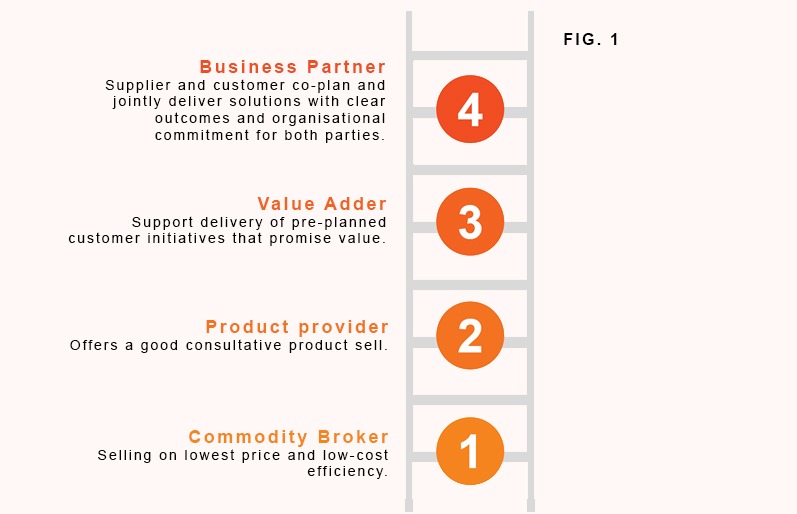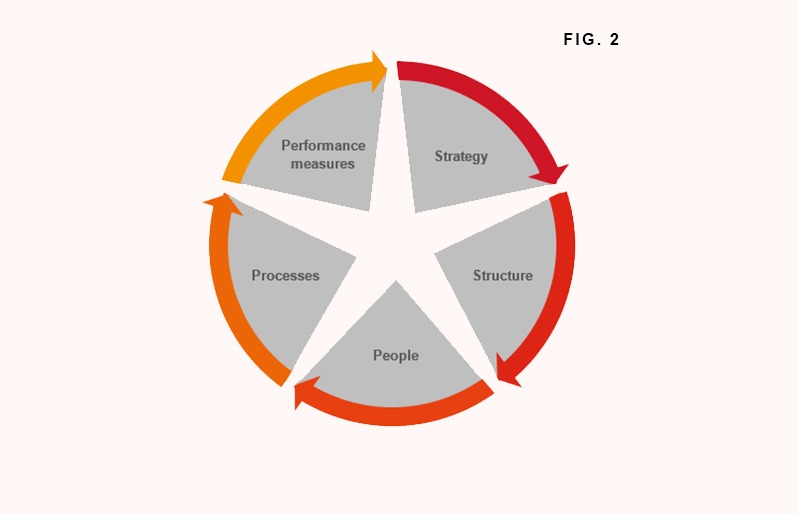Your browser is not supported.
The latest version of Safari, Chrome, Firefox, Internet Explorer or Microsoft Edge is required to use this website.
Click the button below to update and we look forward to seeing you soon.
Update now
Informed by our 20+ years of award-winning experience in pharma, this article will provide you with 6 proven steps for achieving excellent key account management in pharma.
All pharma companies recognise the importance and power of effective key account management. It is an ideal that has been pursued for decades. But the jury is out on how close pharma companies have got to achieving excellence.
When excellence in key account management is achieved, an organisation is seen as a ‘value adder’ or ‘business partner’ in the eyes of its customers (see Fig.1) and strong, meaningful and more sustainable relationships exist.

Yet our data shows many customers see pharma companies as just a ‘product provider’ or ‘commodity broker’, with the conversation predominantly focusing on price or features – things that often don’t offer useful differentiation, and are easily interchangeable from one pharma company to the next.
In the pursuit of excellent key account management, many pharma companies focus first on programmes that train or upskill their Key Account Managers. The intention being to equip them with what’s needed to have ‘value adding’ conversations and shift the organisation up the customer perception ladder (Fig.1). The reality is these interventions are often insufficient on their own.
The companies that we’ve seen being most successful in moving up the ladder (Fig.1), are those who encompass, consider and mobilise all areas of their organisation (not just those in customer facing roles), taking a holistic view of how the organisation works and thinks. Galbraith’s STAR model (Fig.2) gives a helpful frame to think about these inter-related areas.

When taking this approach to the journey towards excellence in key account management, leaders and their teams should consider their key account management strategy and areas like:
Ultimately the accounts that are prioritised should always be one where there’s benefit for all three parties – the organisation, customer and patient.
Watch out!: Emphasise to teams that they shouldn’t look to change the way they work with all their customers – this will be impossible to maintain. The idea is to prioritise effort. It may even be that some valuable accounts can be maintained and improved without any radical changes to the relationship or even by reducing effort or engaging in a different way. For more on this read ‘So you seriously want to be Key Account Excellent?’
Watch out!: As part of this process it’s important to not only understand ‘what is happening?’ but to uncover ‘why is it happening?’. On building this firm understanding the team will find it easier to pinpoint real opportunities within the account and the best way to unlock them.
Watch out!: Ensure account teams are clear on the expected outcomes and the plan that’ll help them get there.
Watch out!: The learnings from ideas 1-5 should be seen as an active learning ground. Encourage account teams to adopt a ‘continuous improvement’ mindset so they actively evolve what and how they work with key customers. The quality of critical thinking involved in ‘planning’ is the point, NOT just the ‘plan’ as a deliverable. This will sustain the points of differentiation that have been established to-date.
Rubica has spent 20+ years working alongside and within pharmaceuticals companies, to support their evolution to a new way of working with customers. If you want to revolutionise how your team approaches key account management in pharma get in touch, or download our guide ‘The Future of Key Account Management‘.